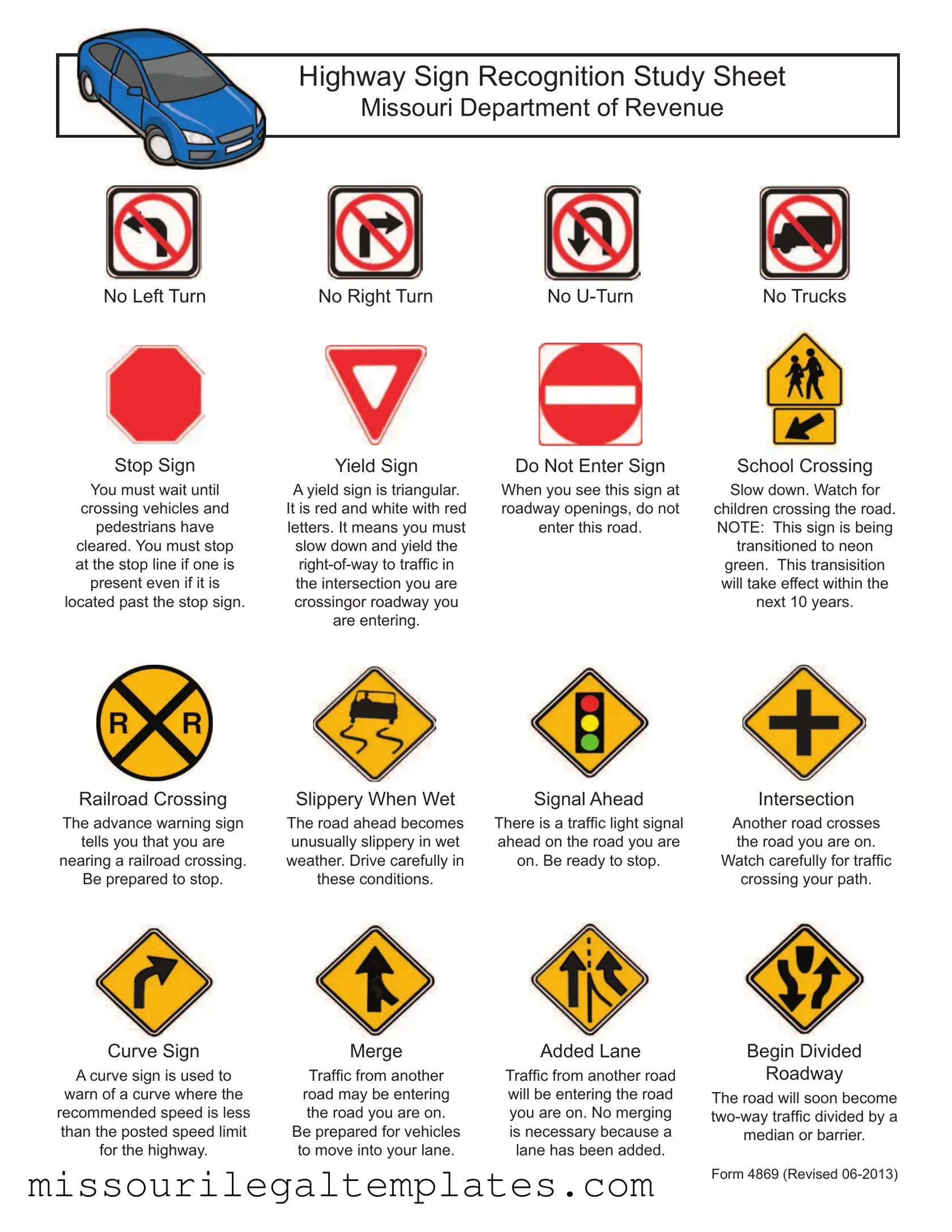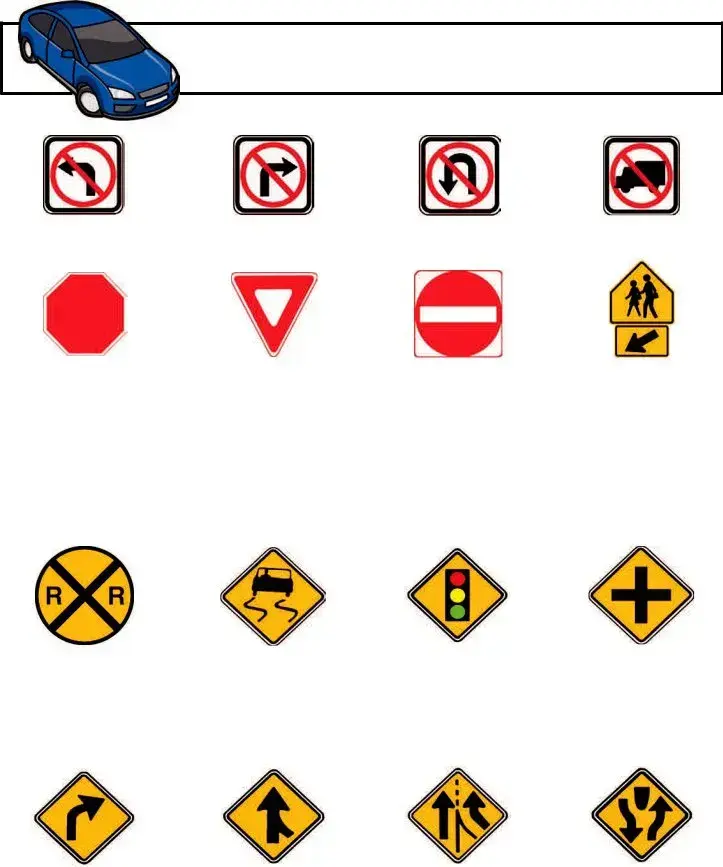The Road Sign Test Missouri form is an essential tool for drivers seeking to understand and navigate the various traffic signs they may encounter on the road. This form includes a comprehensive study sheet that highlights critical signs such as "No Left Turn," "Stop Sign," and "Yield Sign," each accompanied by clear descriptions of their meanings and the appropriate actions drivers must take. For instance, a yield sign, which is triangular in shape, instructs drivers to slow down and yield the right-of-way to oncoming traffic. The form also addresses specific scenarios like railroad crossings, where advance warning signs alert drivers to prepare for potential stops. Additionally, it covers important safety reminders, such as the need to be cautious in slippery conditions and to watch for children at school crossings, which are transitioning to a neon green color for better visibility. The inclusion of signs like "Merge" and "Divided Roadway" prepares drivers for changes in traffic flow, ensuring they remain alert and safe. Overall, this form serves as a vital resource for enhancing road safety and promoting responsible driving habits in Missouri.

